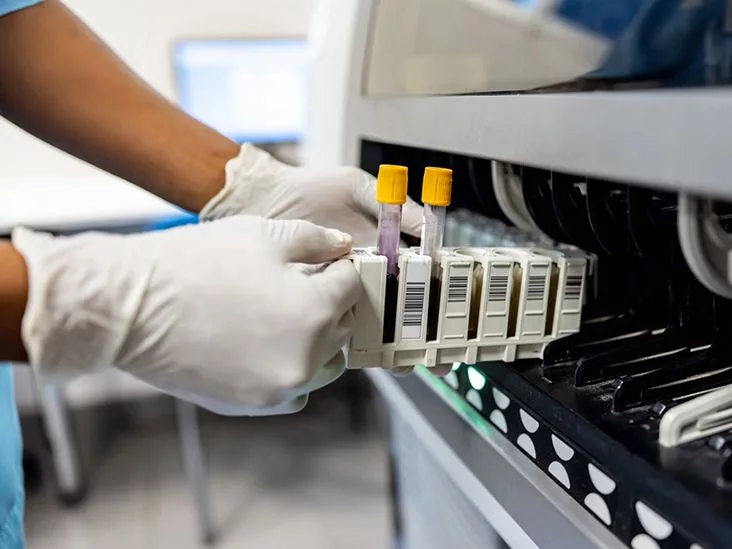Hey there, friend. If you’ve ever Googled “Parkinson’s disease blood test” hoping for a quick answer, you’re not alone. The idea of a simple finger‑prick that could tell you whether Parkinson’s is lurking inside feels almost magical, doesn’t it? Let’s cut through the hype together, explore the science that’s actually happening, and see what it means for anyone watching for early signs—or simply wanting to stay informed.
Quick answer
Right now, there’s no single blood test that can give a definitive Parkinson’s diagnosis. All the promising panels we’ll talk about are still in research or early clinical validation. Think of them as “future tools” rather than “ready‑to‑use kits.”
What the regulators say
The U.S. Food & Drug Administration and major health agencies list these assays as investigational. For example, the NIH notes that a potential blood test is still in the research phase, not yet cleared for routine clinical use.
Why it matters
Parkinson’s is usually diagnosed after motor symptoms appear—by then, up to 60 % of dopamine‑producing neurons may already be gone. An accurate blood biomarker could let us intervene earlier, when neuroprotective therapies have the best chance to work.
Promising panels
Scientists worldwide are hunting for “blood biomarkers” that reliably reflect brain changes. Below is a snapshot of the most talked‑about panels, their targets, and how they performed in early studies.
| Panel / Study | Biomarker(s) | Sensitivity | Specificity | Stage |
|---|---|---|---|---|
| Mito DNADX (Duke/NIH) | mtDNA damage | ≈ 85‑90 % | ≈ 80 % | Phase 1/2 |
| Alpha‑synuclein SAA (Kluge et al., 2024) | Seeded α‑syn in exosomes | 99 % (79/80 PD) | 100 % (0/80 controls) | Cross‑sectional |
| tRNA‑fragment panel (Soreq et al., 2025) | Nuclear & mitochondrial tRNA motifs | 86 % overall accuracy | — | Large‑cohort validation |
| 8‑protein AI panel (UCL, 2024) | 8 circulating proteins | 100 % (99/99 PD) | 100 % (36/36 controls) | Retrospective |
How each biomarker works
- mtDNA damage: Mitochondria are the cell’s power plants. When their DNA gets nicked, those fragments end up in blood cells, acting like a “smoke alarm” for neuronal stress.
- Alpha‑synuclein seeds: Tiny clumps of the protein α‑synuclein can “seed” more clumps, a process measurable in neuronal exosomes floating in plasma.
- tRNA fragments: Under cellular stress, transfer‑RNA breaks into short pieces. Specific motifs rise or fall in Parkinson’s, giving an early‑disease signature.
- Protein AI panel: Machine‑learning algorithms scan the levels of eight proteins linked to inflammation and neuro‑degeneration, spotting patterns invisible to the naked eye.
A real‑world glimpse
Imagine a 58‑year‑old named Maya who’s been having vivid, vivid dreams where she acts out her movements—a classic sign of idiopathic REM sleep behaviour disorder (iRBD). She enrolled in a University College London study that measured eight proteins in a simple blood draw. The algorithm flagged her as “high risk,” and seven years later, neurologists confirmed early Parkinson’s. Stories like Maya’s illustrate the promise of detecting the disease before the tremor even starts.
Why blood tests could change care
Let’s break down the upside and the downside—because every bright idea comes with a shadow.
Potential benefits
- Earlier intervention: Treatments that protect dopamine neurons work best before massive loss occurs.
- Objective monitoring: A repeatable blood read‑out could show whether a drug is actually slowing disease progression.
- Research enrollment: Clear biomarkers help match participants to the right clinical trials, speeding up drug discovery.
Possible risks & limitations
- False reassurance or alarm: No test is perfect; a “positive” result might cause anxiety, while a “negative” could miss early disease.
- Cost and access: PCR‑based assays and AI platforms can cost $150‑$300 per test, and insurance rarely covers investigational panels yet.
- Over‑medicalising risk: Detecting “risk” in people who feel fine raises ethical questions about how we handle that information.
Balancing act for clinicians
When a doctor talks about a blood biomarker, a good checklist helps keep the conversation grounded:
- Explain the uncertainty—no test is 100 % definitive yet.
- Stress that a clinical exam remains the gold standard.
- Offer repeat testing or a referral to a movement‑disorder specialist if the result is ambiguous.
The science behind the tests
Mito DNADX – mitochondrial DNA damage assay
Developed by Dr. Laurie Sanders at Duke University, this test uses polymerase chain reaction (PCR) to count damaged bits of mitochondrial DNA in white blood cells. In a 2023 Science Translational Medicine paper, the assay distinguished Parkinson’s patients from controls with an 85‑90 % sensitivity. It works in both genetic and sporadic cases and even when patients are on medication.
Alpha‑synuclein seed amplification (SAA)
Annika Kluge and Eva Schaeffer at the University Hospital Schleswig‑Holstein refined a technique that isolates neuronal exosomes from blood, then amplifies any hidden α‑synuclein seeds. Their 2024 study in the Journal of Parkinson’s Disease reported 99 % of Parkinson’s patients testing positive, while none of the healthy volunteers did.
tRNA‑fragment blood test
Prof. Hermona Soreq’s team published in Nature Aging (2025) a test that measures a nuclear‑derived tRNA fragment that’s higher in Parkinson’s, and a mitochondrial fragment that’s lower. The ratio between the two gave an 86 % accuracy across a large cohort, making it one of the most promising early‑diagnosis tools.
AI‑driven 8‑protein panel (UCL)
Kevin Mills and colleagues at University College London combined artificial intelligence with measurements of eight circulating proteins. In a 2024 Nature Communications paper, the model identified every Parkinson’s case in their sample (99/99) and correctly flagged all controls (36/36). The catch? The panel still needs external validation in diverse populations.
What a future “Parkinson blood panel” could look like
Sample workflow in a primary‑care visit
- Assess risk factors: family history, REM‑behavior disorder, loss of smell.
- Order a combined panel (if available) that includes mtDNA damage, α‑syn SAA, and the protein AI score.
- Run the results through a risk‑score algorithm.
- Refer to a neurologist if the score crosses a set threshold.
Risk‑score interpretation table
| Score | Interpretation | Next step |
|---|---|---|
| 0‑2 | Low probability | Routine monitoring, repeat in 2 years |
| 3‑5 | Moderate probability | Neurology consult, consider imaging |
| 6‑8 | High probability | Immediate specialist referral, discuss trial eligibility |
Cost & insurance outlook
Right now most of these assays are only offered in research labs, so the out‑of‑pocket price can range from $150 to $300 per test. Insurance coverage is rare, but that could change quickly if larger validation studies confirm clinical utility.
Ethical & regulatory notes
Any blood‑based risk result should come with informed consent, clear data‑privacy safeguards (HIPAA/GDPR), and a plan for psychological support if the news is unsettling.
What you can do today
Stay informed
Stick to reputable sources—Parkinson’s Foundation, the NIH, and peer‑reviewed journals. Avoid sensational headlines that promise a “miracle cure” in a test tube.
Consider research participation
If you or a loved one fits the profile (early symptoms, family history, iRBD), look for local registries that accept participants for blood‑biomarker studies. Your contribution could accelerate a test becoming clinically available.
Adopt supportive lifestyle habits
Regardless of testing, regular exercise, a balanced diet, and keeping an eye on subtle changes (like loss of smell or sleep disturbances) remain the best everyday defenses.
Conclusion
So, where do we stand? The dream of a simple Parkinson’s disease blood test is alive, but the reality is that we’re still in the “promising research” phase. Panels that look at mitochondrial DNA, α‑synuclein seeds, tRNA fragments, and sophisticated protein signatures are delivering astonishing early‑detection numbers—sometimes 99 % sensitivity, sometimes perfect specificity—but they haven’t yet become the routine blood draw you can ask for at your local clinic.
What does that mean for you? Keep the conversation open with your doctor, stay curious, and consider joining a study if you qualify. The science is moving fast, and every data point brings us a step closer to the day when a quick finger‑prick can give us the certainty we need to act early and live better.
Got questions or a story of your own? I’d love to hear it—drop a comment, share your experience, or simply let me know what you think about these emerging tests. Together, we’ll keep navigating this journey, one informed step at a time.


















Leave a Reply
You must be logged in to post a comment.